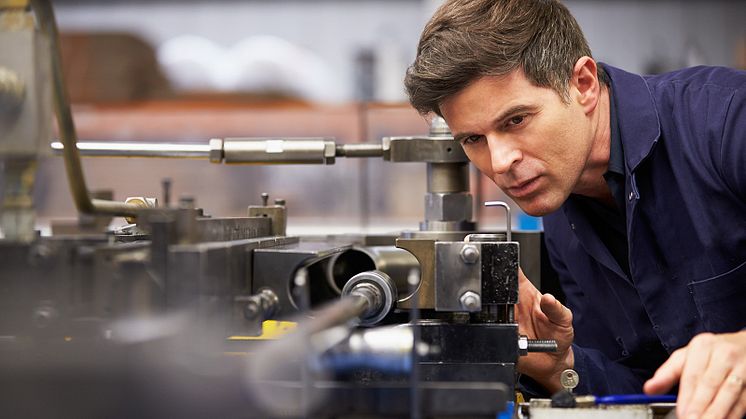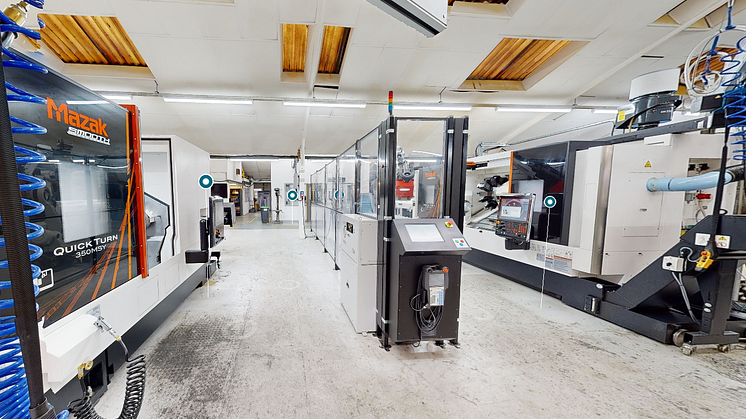
Press release -
5 future trends in precision engineering
Precision engineering has been the key to high quality and safety in industries such as aerospace and medical technology for decades. As manufacturing technology advances, new trends are emerging that are pushing the boundaries of what is possible - from 3D printing to intelligent production networks. But it is not only newly manufactured machines that can contribute to progress in the industry.
High precision engineering plays a fundamental role in numerous key industries - whether in aerospace, automotive engineering, medical technology or other highly specialised areas. In all these sectors, precision is not only a question of quality, but also of safety and reliable functionality. Developments in this area have gathered considerable momentum in recent years and promise significant innovations for the future. But what trends are emerging? And how can companies keep pace in this dynamic and demanding market environment?
If it has to be precise
In precision mechanics, it is crucial that every component fits exactly and that the correct functioning of a system is guaranteed. Precision craftsmanship has a long history.
The industrial revolution opened a new chapter in the history of precision engineering. With the development of the railway, war machines and the first aeroplanes, maximum precision and reliability suddenly became essential. The increased requirements drove the industry to develop innovative parts and machines.
Significant progress was made with the introduction of CNC machines (CNC: Computer Numerical Control) in the 1950s. This innovation represented a key turning point. It made it possible to largely automate precision mechanics, which avoided inaccuracies caused by manual labour.
New trends in precision engineering
From the industrial revolution to the present day, precision engineering has been constantly evolving. 5 examples of current trends that have the potential to have a lasting impact on manufacturing processes and technologies:
1. Further development of 3D printing
With 3D printing, additive manufacturing will increasingly be able to produce complex precision-manufactured parts from a wider range of materials with improved attributes. This could become particularly important in medical technology or aerospace, where the highest demands already prevail and the use of new materials in particular can mean major advances.
2. Use of smart materials and sensors
In the automotive industry and medical technology, components could be equipped with integrated sensors and intelligent materials that react to environmental changes. This can significantly improve the safety, efficiency and functionality of products. These components could provide real-time data on the condition of the vehicle or medical devices to enable preventive maintenance and better treatment of patients.
3. Digital twins and simulations
By utilising digital twins and extensive simulations, companies can shorten development cycles and significantly increase the efficiency of their production processes. These technologies make it possible to virtually test and optimise the performance of products and processes before physical models are created. The benefits range from cost reductions and quality improvements to an accelerated market launch.
4. Intelligent production networks
The use of intelligent manufacturing networks based on the integration of IoT (Internet of Things), AI and real-time data analysis enables seamless coordination and optimisation of production processes. Networked systems help production lines to react more flexibly to changes and utilise resources more efficiently. In addition, production planning can be optimised, throughput times can be reduced and it is possible to react quickly to changing customer requirements and market dynamics.
5. Reusability and recycling
The development of easily recyclable or reusable components will play a key role in a sustainable future. This is particularly relevant in the automotive industry, where the transition to electric vehicles and the need to minimise environmental impact are becoming increasingly important.
Ensure quality, reduce costs: used machines as a solution
The use of high-quality machines is therefore essential in precision engineering. However, the purchase of such specialised machines can be associated with considerable costs, which can be a challenge for smaller companies or start-ups in particular. The market for used machines offers a practical and cost-effective solution. Here you can also find high-quality machines that can be seamlessly integrated into existing production processes and provide a solid basis for precision mechanical production.
The industrial auction house Surplex regularly organises auctions in which companies can upgrade their machinery with high-quality used machines - including for precision mechanics. Following the closure of FLEXIBLE MACHINING SYSTEMS Ltd, a large technical subcontractor from England, over 400 machines are currently up for auction. The auction is divided into two days: On 12 March, interested parties can bid for the company's well-maintained precision machines, which are almost as good as new. On 13 March, other systems for metal part production and other machines will go under the hammer. Some machines such as a Matsuura MAM 72-35V, Mazak Quick Turn Smooth 350MY or the MAZAK Optiplex Nexus 3015 Fibre are also available for direct sale.
The machines can be viewed by appointment on site in West Sussex or in a virtual 3D tour.
Surplex is characterised above all by its excellent service when purchasing used machines. Customers benefit from comprehensive advice and a transparent purchase process that simplifies the acquisition of used machines. From purchase to delivery, the company provides a competent all-round service from a single source.


Related links
Categories
About Surplex
Surplex is one of Europe’s leading industrial auction houses and trades worldwide in used machines and factory equipment. The 18-language auction platform Surplex.com is visited around 50 million times every year. It sells more than 55,000 industrial products per year in over 800 online auctions. The company is based in Düsseldorf and has offices in 16 European countries. Over 220 employees from 20 different nations generate an annual turnover of more than 100 million euros.




